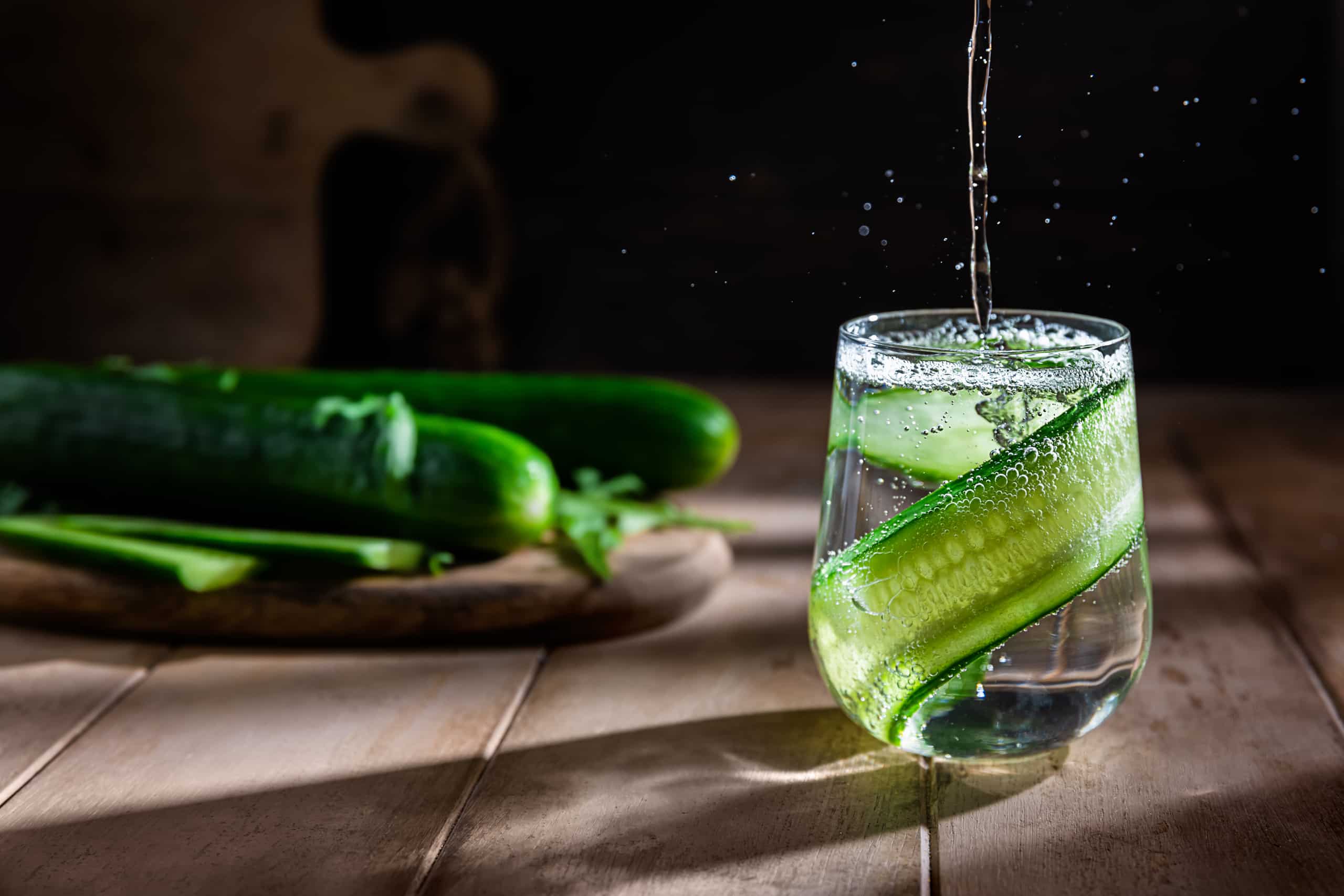Introduction
Keeping the spine healthy is key for balance, posture and avoiding pain. Bones, joints, discs and ligaments can wear out or get injured with time. So, it’s important to nourish the spine with the right nutrition and stay hydrated with water and other liquids.
Good hydration helps the cartilage and muscles, flushes toxins away, maintains shock absorption in discs, allows normal range of motion in joints and prevents injuries. Eating nutrient-dense foods that are rich in minerals helps maintain proper body chemistry and hydrates tissue and cells inside.
This guide will show:
- specific vitamins and minerals that help nourish the spine
- foods that can ease chronic pain
- general guidelines for nutritious eating
- hydrating food items
- how stomach acidity impacts digestion
- how portion control regulates calories intake
- supplements that support spinal health during physical activities
- lifestyle practices for back pain prevention
- conditions that require medical consultation before dietary changes.
Foods to Help Hydrate Your Spine
Stay hydrated! Gulp fluids for nourishment and hydration. Food with moisture also helps. Moisture helps protect your spine from aches and pains.
Here’s what to eat to keep your spine hydrated and reduce discomfort:
- Foods high in water content, such as fruits and vegetables.
- Foods rich in healthy fats, such as nuts and seeds.
- Foods high in calcium, such as dairy products.
- Foods rich in omega-3 fatty acids, such as fatty fish.
Water
Water is essential for hydration. But, other foods can help too! Certain foods have hydrating properties to nourish your spine and reduce discomfort.
Fruits and veggies like cucumbers (96% water), strawberries (91%), romaine lettuce (95%), celery (95%) and bell peppers (93%) are full of water, vitamins and minerals.
Beans like kidney beans (79%) and black beans (78%) are also hydrating.
Carbohydrates like brown rice (77%) and oats (77%) contain lots of water too. Dairy like whole milk (67%) and yogurt (78%) are also hydrating. Eggs (72%) are a great choice too.
Green tea, soup-based broths and miso soup provide hydration with therapeutic properties. For hot weather months consider frozen treats like ice pops to cool your spinal muscles.
Fruits and Vegetables
Fruits and veggies are some of the healthiest foods to keep your spine hydrated! They have lots of fluids and antioxidants, which help reduce inflammation and joint pain. Plus, they have important vitamins, minerals, and fibers that support strong bones and cartilage.
To get these benefits, add the following to your diet:
- Citrus fruits (oranges, lemons): Vitamin C supports healthy bones and reduces inflammation.
- Berries (strawberries, blueberries): These low-calorie fruit provide antioxidants to reduce inflammation and joint pain.
- Leafy greens (spinach, kale): Magnesium from dark leafy greens increases strength of bone tissue in the spine.
- Cruciferous veggies (broccoli, cauliflower): Rich in nutrients, these veggies can reduce stiffness in your back and joint pain.
- Cruciferous root vegs (carrots, parsnips): These root veggies also have nutrients for healthy bones and cartilage.
For the best spine health, have a balanced diet with lots of different fruits and veggies. This will provide water-rich food and balance pH levels while giving essential nutrition to relieve aches and pains related to dehydration and lack of nutrients.
Nuts and Seeds
Nuts and seeds are chock-full of essential fatty acids, proteins, and minerals. They can also provide hydration if lightly cooked or ground and soaked in water. Almonds, cashews, sunflower seeds, and pumpkin seeds are great for the spine – they provide magnesium, calcium, zinc, anti-inflammatory compounds, and more.
To make the most of these benefits, store nuts properly, and add a pinch of salt when combining them into meals. This will help your body absorb their fluids more easily!
Fish and Seafood
Fish and seafood are excellent for hydrating your spine. They contain essential fatty acids, amino acids, vitamins and minerals, especially omega-3 fatty acids. These reduce inflammation and improve motor skills, energy levels, moods and mental clarity. Examples of tasty fish packed with omega-3s are salmon, tuna, mackerel and herring.
Seafood is also great for spinal health. Anchovies, clams, lobster and crab provide minerals like calcium and magnesium. Smelts and sardines provide antioxidants which protect the spinal discs. Plus, fish is low in calories compared to red meat. It’s also beneficial for pregnant women, helping to develop babies’ brains.
Herbs and Spices
Herbs and spices can help hydration, and provide essential vitamins, minerals, and antioxidants to the spine. Supplements often come in capsule or liquid form. Some helpful spices and herbs are cinnamon, ginger, turmeric, cayenne pepper, black pepper, garlic, oregano, rosemary, and thyme.
- Cinnamon reduces inflammation which can cause discomfort in the spine. It also has antioxidant properties that fight free radicals.
- Ginger can reduce nausea and vomiting from back pain. It is anti-inflammatory and increases circulation.
- Turmeric decreases inflammation and contains antioxidants to fight oxidative damage.
- Cayenne pepper improves circulation and relieves soreness.
- Black pepper has analgesic properties for temporary pain relief.
- Garlic reduces inflammation and has antibacterial powers.
Oregano, rosemary, and thyme all have anti-inflammatory properties for arthritis-related pain. They could also reduce inflammation faster than other medications. Adding these seasonings to meals can offer extra relief.
Benefits of Eating Hydrating Foods
For spine health, hydrating foods can help reduce discomfort. These foods, like fruit and veg, provide lots of water, minerals, electrolytes and vitamins. So, what’s the benefit of eating hydrating foods? Let’s check it out!
Improved Mobility
Eating hydrating foods can help improve mobility and strength in your spine. Adequate hydration maintains the volume of your spinal discs, letting them support your back and torso properly. Water also lubricates your joints, aiding movement and reducing discomfort.
Eating nutrient-rich foods can help strengthen bones and improve their weight-bearing ability, taking pressure off your spine. Foods high in magnesium promote healthy muscle activity and control inflammation, leading to more comfortable movement.
Reduced Inflammation
Certain foods are great for reducing inflammation, which can lead to back pain. Cucumbers, celery, tomatoes, watermelon, strawberries and oranges are full of water and should be eaten raw to get the most vitamins and minerals. Beets and spinach, packed with nitrates, can also help cut down inflammation. Omega 3 fatty acids, found in cold water fish and olive oil, can be beneficial too.
Check with a doctor or nutritionist if you want to supplement your diet for better health.
Improved Circulation
Eating hydrating foods offers great circulation benefits. Water aids blood flow, allowing nutrients and oxygen to reach cells faster. This helps reduce joint pain and muscular stiffness. It’s also important for muscle functioning, as water helps them contract and relax. Plus, it aids cell regeneration, reducing inflammation, swelling and pressure on joints and muscles. Drinking more water also means a better respiratory system, aiding in relieving chest pain or other breathing issues.
Conclusion
Hydration is important for promoting spine health. It helps to keep vertebrae from compressing, cushion spinal discs and make movement less painful. To stay hydrated, it’s essential to drink plenty of fluids such as water.
Additionally, nourishing your spine with hydrating foods like leafy greens, fruits and soups can give it the extra moisture it needs. However, if you’re experiencing any discomfort, it’s best to speak to your doctor.
Adding these nourishing foods into your diet can help keep your body hydrated and improve spine health.
Frequently Asked Questions
Q: Why is it important to eat hydrating foods for the spine?
A: The spine is made up of cartilage and joints that require water to stay lubricated and flexible. Hydrating foods help to nourish the spine, reduce discomfort, and promote healthy movement.
Q: What are some examples of hydrating foods for the spine?
A: Cucumbers, watermelon, celery, strawberries, spinach, and citrus fruits like oranges and lemons are all hydrating foods that can benefit the spine.
Q: How much water should I drink for optimal spinal health?
A: It is recommended to drink at least 8 glasses (64 ounces) of water per day to maintain proper hydration for the spine and overall health.
Q: Can dehydration cause spinal pain?
A: Yes, dehydration can cause spinal pain and discomfort. When the spine is dehydrated, the discs can shrink and lose their ability to cushion and support the vertebrae. This can lead to pain and stiffness in the neck and back.
Q: Are there any foods or beverages that can dehydrate the spine?
A: Yes, caffeine and alcohol can both dehydrate the body and contribute to spinal dehydration. It is important to consume these in moderation and balance them with plenty of hydrating foods and water.
Q: How can I incorporate more hydrating foods into my diet?
A: Try adding a variety of fruits and vegetables to your meals and snacks throughout the day. You can also incorporate soups and broths, which are a great source of hydration and nutrients for the spine and overall health.









